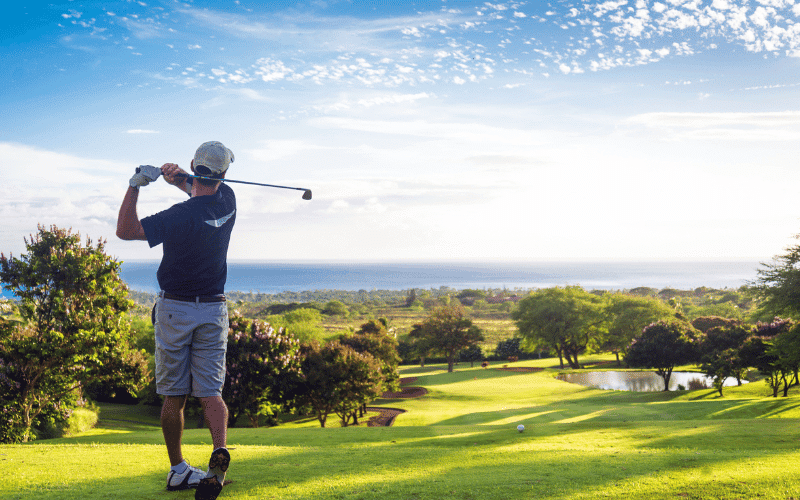Introduction
Golf is a game of skill, strategy, and precision. It requires a deep understanding of various techniques and strategies to excel in this sport.
In this article, we will explore the concept of long-game strategies that are essential for maximizing distance and achieving exceptional results on the golf course.
Understanding Long Game Strategies
Long-game strategies in golf are essential for achieving success on the course.
These strategies encompass various techniques and approaches that focus on maximizing distance and accuracy when hitting the ball, particularly off the tee.
They are crucial for every golfer, whether professional or amateur, as they contribute significantly to the overall performance and enjoyment of the game.
- Equipment: Long-game strategies involve the proper selection and use of equipment, including drivers, woods, and irons, to optimize distance and control.
- Swing Techniques: Developing an effective long-game strategy requires mastering proper swing techniques tailored to different club types, ensuring consistent ball flight and distance.
- Course Management: Golfers also need to consider course layout, wind conditions, hazards, and other factors when devising long-game strategies to achieve the desired outcome.
- Mental Approach: Furthermore, maintaining mental composure and focus is fundamental in executing long-game strategies successfully, particularly in high-pressure situations.
Developing and implementing effective long-game strategies offers several benefits to golfers.
By mastering the art of maximizing distance, golfers can gain a competitive edge, navigate challenging course conditions, and achieve greater consistency in their shots.
Moreover, honing long-game strategies contributes to improved confidence and overall enjoyment of the game.

Important Factors for Maximum Distance
When it comes to achieving maximum distance on the golf course, mastering the technique and form is essential.
Let's delve into the key elements that constitute a powerful and accurate golf swing.
- Addressing the ball with the correct body posture and alignment is crucial. A strong posture allows the golfer to maintain balance and stability throughout the swing.
- Proper alignment of the shoulders, hips, and feet also contributes to the generation of torque and power during the swing.
- The golf swing involves a sequence of movements that demand precision and coordination. Understanding the mechanics of the golf swing, from the backswing to the follow-through, is fundamental for generating maximum clubhead speed and distance.
- Key aspects, such as the wrist hinge, weight transfer, and rotation, significantly impact the efficiency of the swing.
- Timing is critical for achieving optimal impact with the ball. The synchronization of body movements and club position is essential for consistent and powerful shots.
- Developing a rhythmic and balanced swing enables golfers to harness the energy transfer from the club to the ball, resulting in longer and more accurate shots.
Choosing the right equipment is essential for maximizing distance in golf.
From selecting the appropriate club to utilizing advanced golf ball technology, each equipment choice impacts the potential distance achievable.
Factors such as club loft, shaft flex, and ball compression are crucial considerations when aiming for consistent and long-distance shots.
- Club Selection: The choice of club greatly influences the distance of a golf shot. Different clubs, such as drivers, woods, and irons, have unique characteristics that can affect distance. Understanding the specifications and designs of each club type is essential for optimal distance.
- Shaft Flex: The flexibility of the shaft directly impacts the speed and power of the swing. Golfers should consider their swing speed and tempo when selecting the appropriate shaft flex to maximize distance and accuracy.
- Ball Compression: Golf ball compression can significantly affect distance and feel. Higher compression balls are ideal for faster swing speeds, while lower compression balls provide more control for slower swing speeds, ultimately influencing distance.
Developing a Practicing Routine
Enhancing physical fitness through strength and flexibility training significantly contributes to improved performance and distance in golf.
A well-rounded training regimen focusing on core strength, flexibility, and muscular endurance helps golfers generate greater power and maintain optimal body mechanics during swings.
Mental and Tactical Preparation
Mental preparation and tactical acumen are indispensable elements of developing a practice routine geared toward maximizing distance.
Golfers must cultivate mental resilience, strategic thinking, and course management skills to overcome challenges and capitalize on opportunities.
A holistic approach to practice, encompassing physical and mental facets, leads to enhanced long-game performance.
Adapting to Course Conditions
Adapting to varying course conditions such as wind and slope is integral to optimizing distance in golf.
Understanding how wind affects ball trajectory and adjusting one's swing accordingly is essential.
Similarly, mastering the techniques for playing on sloped terrains enables golfers to adapt and execute shots with precision under diverse environmental challenges.
- Understanding Wind Influence:
- How wind affects the ball's flight path and carry distance.
- Adjusting Swing for Wind:
- Techniques for modifying the swing to counteract the effects of wind.
- Mastering Slope Play:
- Strategies for analyzing and playing shots on sloped terrains.
- Adapting to Environmental Challenges:
- Examples of how golfers have adjusted their techniques to overcome wind and slope obstacles during major tournaments.
When it comes to the golf game, understanding the intricacies of different types of grass can profoundly impact one's performance.
Below are detailed strategies for approaching different types of grass on the golf course:
- Bermuda Grass: Known for its dense and hardy nature, Bermuda grass requires a precise approach. Golfers should focus on hitting the ball cleanly due to its tight-lie characteristics. Additionally, adjusting the club selection and angle is essential to achieve the desired shot distance.
- Bentgrass: With its fine texture and smooth consistency, Bentgrass offers a consistent ball roll. Paying attention to the speed and direction of the greens is crucial, requiring delicate touches with the putting stroke.
- Zoysia Grass: Golfers should adapt to the thicker and spongier nature of Zoysia grass. Altering the swing to accommodate the resistance of this grass type can significantly affect shot distance and ball trajectory.
- Poa Annua Grass: Recognizable for its uneven and unpredictable surface, Poa Annua grass demands adaptability. Prioritizing precision and control over power is essential to navigate the challenges posed by this type of grass.
- Ryegrass: Known for its versatility, Ryegrass requires an adaptive approach. Considering its varying textures and densities, golfers should adjust their strategies to maintain consistent shot distance and accuracy.
Conclusion
Mastering long-game strategies for maximum distance is a continuous journey that demands dedication and a comprehensive understanding of the sport.
By integrating effective techniques, equipment choices, and mental fortitude, golfers can elevate their game and achieve remarkable results on the course.
Embracing the multifaceted aspects of long-game strategies paves the way for enhanced performance, confidence, and enjoyment in the game of golf.

